Merida’s updated One-Twenty is targeted at riders looking for a bike to complement their longer-travel rigs, or for those dipping their toes into the world of full-suss machines.
While the name suggests otherwise, it has 130mm of bounce at either end, putting it in the shorter-travel trail bikes category.
The geometry and suspension approaches are modelled on Merida's Bike-of-the-Year winning longer-travel bikes, the One-Forty and One-Sixty.
This means the bike features the brand's P-Flex suspension linkage, which uses flex-stays in place of a rear pivot, and its Agilometer sizing, designed around longer reaches and shorter seat tubes.
Uphill, I found the suspension to perform exceptionally well. It’s stable under pedalling loads, while offering plenty of traction.
Downhill, the geometry just works, and while it’s not the smoothest bike around, it eggs you on, pushing your skills – and the brakes and tyres – to their limits.
2024 Headliners bike test
Our annual Headliners bike test is an opportunity to swing a leg over the new bikes we're most excited to ride, and a chance to delve deeper into the minds of the product managers and engineers with their fingers on the pulse of where the industry is heading.
This year, we've selected six new bikes for 2024 that epitomise the cutting edge of mountain biking in its various forms.
Bikes on test
Merida One-Twenty 700 frame and suspension
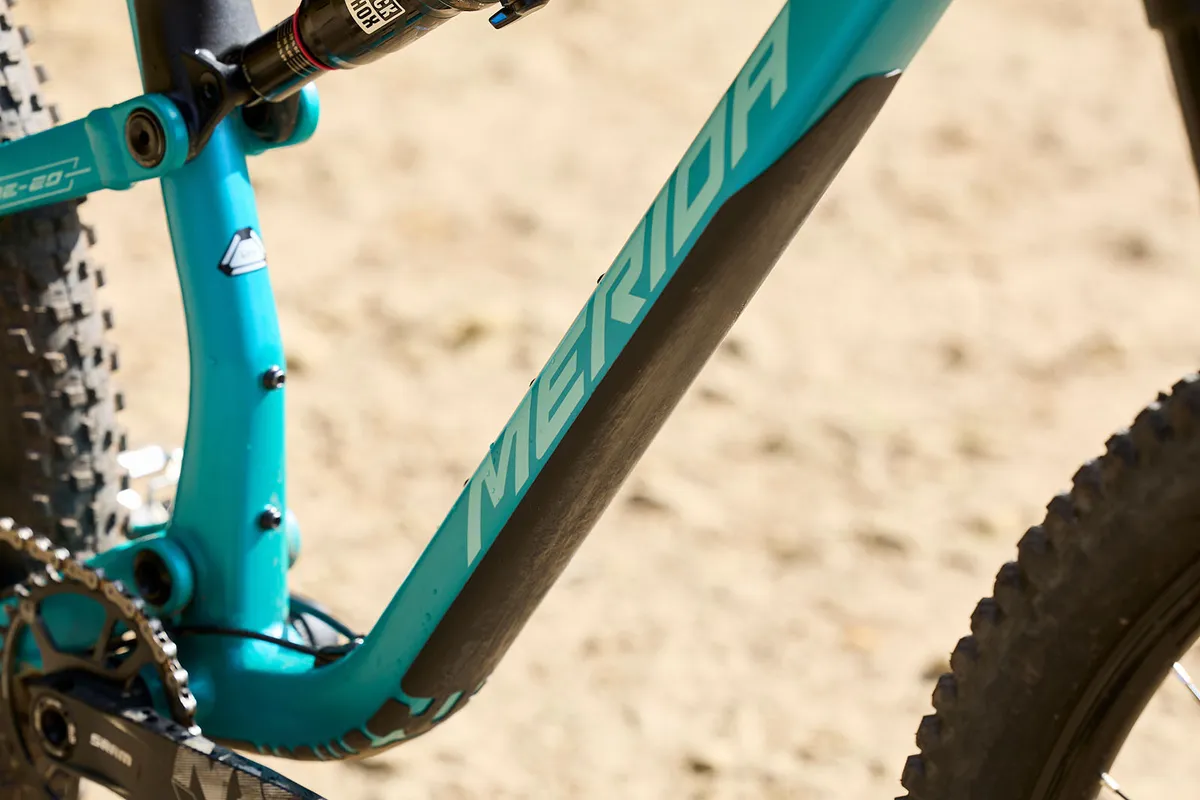
Merida has picked aluminium for the construction of the One-Twenty range.
This contributes to a relatively weighty overall bike, at 15.3kg for my Large, but helps keep the pricing competitive. At the moment, no carbon model is on the cards.
While many frames rely on a pivot in the rear triangle, Merida has designed flex into the seatstays. Without the pivot, weight and costs are saved, while maintenance demands are also reduced.
Despite the material flexing, the frames still get a highly rated Level 4 lab test result, and so if you want, enduro racing is covered by the frame’s warranty.
Merida has designed the bike to have plenty of mid-to-late stroke progression to enable it to be hammered over technical trails. Early in the stroke is said to be supple, maximising comfort and grip.
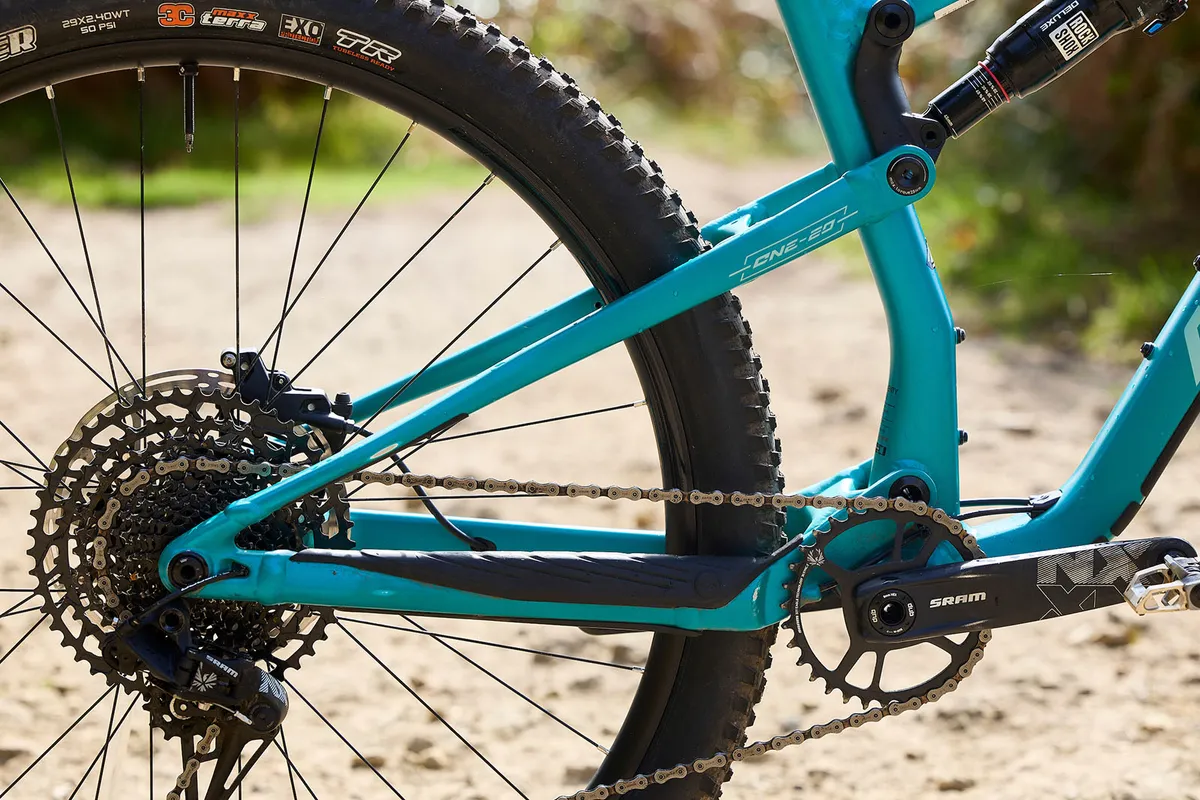
Inside the frame, there’s a pair of water bottle bosses, while there’s a tool-stash mount near the head tube, too.
Thin frame protection runs down the down tube, with a thicker section along the chainstays.
A small port near the bottom bracket means you can get your fingers, or a pick, in there to aid internal cable routing.
The frame’s rear triangle is relatively wide, and so after just a few rides I had scuffed the paint on the seatstays with my heels.
Merida One-Twenty 700 geometry
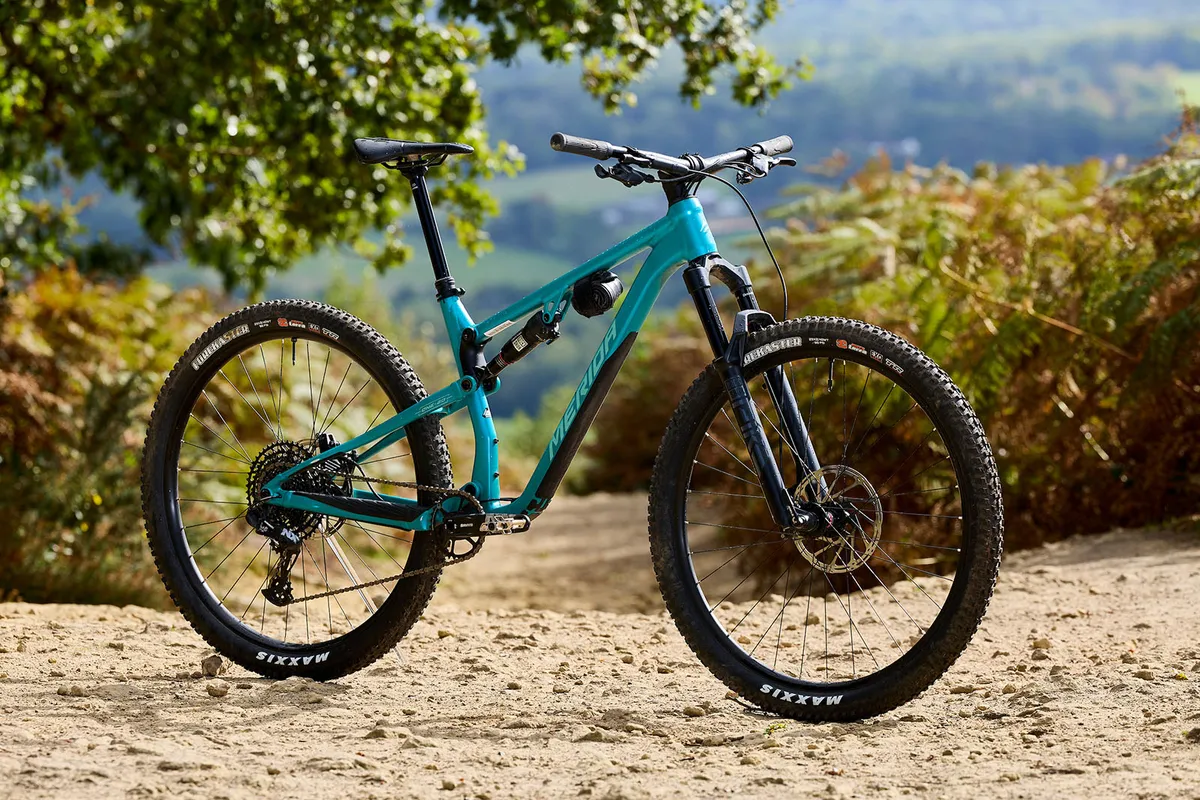
As we’ve come to expect from Merida, the geometry is bang up to date, with a Long-sized bike (equivalent to a Large) featuring a lengthy 485mm reach, a 78.5-degree seat angle and a 66-degree head angle.
Seat tubes are short, and so riders tend to have the option to pick a bike via reach preference rather than leg-length.
Chainstays come in at 435mm across the five sizes on offer.
This all represents a shift in shape over the previous model, with a 30mm growth in length across the sizes and a 1.3-degree slacker head angle. The seat angle is also far steeper than before.
| FRAME SIZE | XSHORT | SHORT | МID | LONG | XLONG |
|---|---|---|---|---|---|
| Tyre sizes (in) | 29 | 29 | 29 | 29 | 29 |
| Seat tube (mm) | 400 | 410 | 425 | 445 | 470 |
| Тop tube (mm) | 548 | 569 | 590 | 611 | 632 |
| Сhainstay length (mm) | 435 | 435 | 435 | 435 | 435 |
| Нead tube angle (degrees) | 66 | 66 | 66 | 66 | 66 |
| Seat tube angle (degrees) | 78.5 | 78.5 | 78.5 | 78.5 | 78.5 |
| Вottom bracket drop (mm) | 40 | 40 | 40 | 40 | 40 |
| Нead tube (mm) | 95 | 100 | 105 | 110 | 115 |
| Fork length (mm) | 541 | 541 | 541 | 541 | 541 |
| Reach (mm) | 425 | 445 | 465 | 485 | 505 |
| Stack (mm) | 604 | 609 | 613 | 618 | 622 |
| Wheelbase (mm) | 1,155 | 1,177 | 1,199 | 1,221 | 1,243 |
| Standover height (mm) | 748 | 750 | 752 | 754 | 756 |
Merida One-Twenty 700 specifications
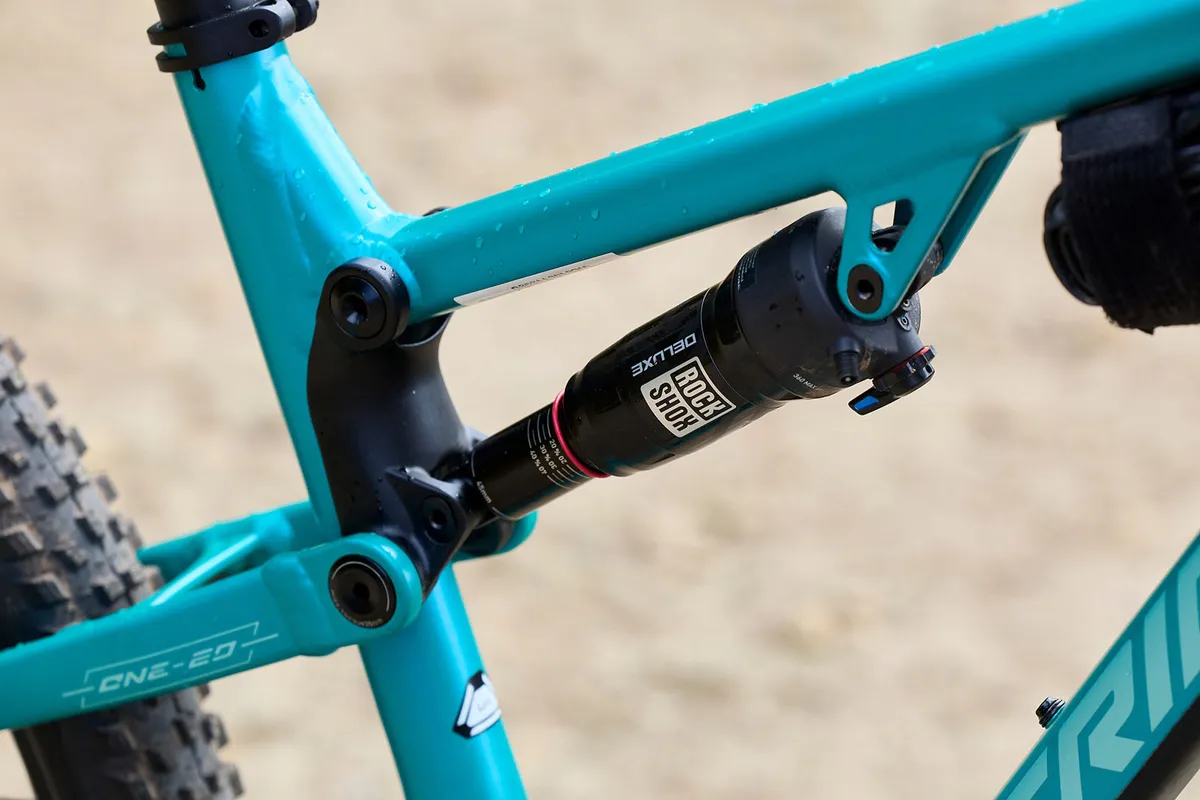
This is the top-level One-Twenty at £3,100, with two cheaper bikes in the range (£2,500 and £1,900) also available.
It comes with a 130mm RockShox Pike Select fork and a RockShox Deluxe Select+ shock.
The drivetrain is largely SRAM NX Eagle, with a 10-50t cassette, while SRAM also provides the stopping, via its DB8 brakes.
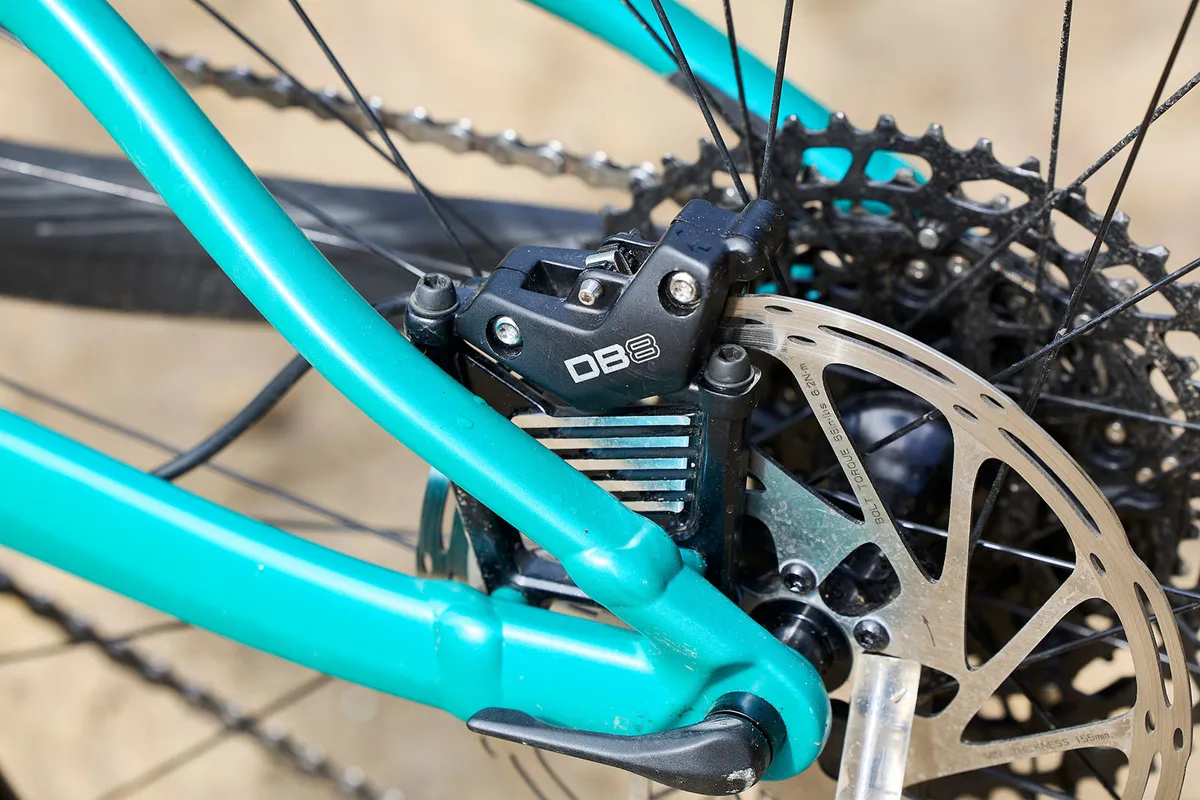
Merida-branded rims hold 29×2.4in Maxxis Forekaster tyres – they’re triple-compound MaxxTerra with an EXO casing.
Merida’s own dropper post is fitted, with lengths ranging from 150 to 200mm across the five sizes.
The cockpit comes from Merida, too. There’s a suitably short 40mm stem, paired with 780mm bars. Their interface is via the larger, stiffer 35mm diameter. Merida’s grips finish the package.
Merida One-Twenty 700 ride impressions
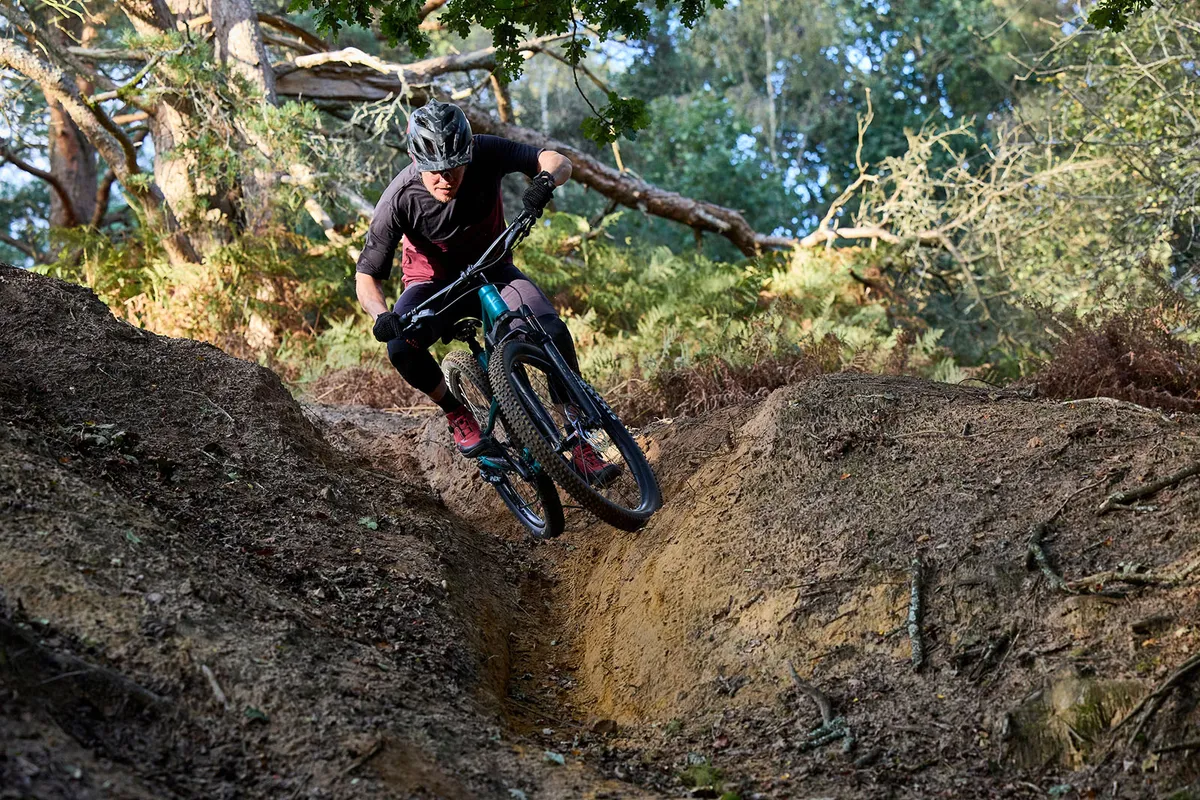
I rode the One-Twenty at its launch on Exmoor in the south-west of England, and then more extensively on my local trail bike testing trails.
Setup
Setup was pretty easy, inflating the fork to the suggested pressure on the back of its legs, and then adding an extra 10psi as per my preference. This gave the fork a slightly firmer feel that matched that of the rear end better.
The shock was tested at a range of sags, from 25 to 30 per cent. I settled on just under 30 per cent.
The brakes usually come with organic pads, however my test bike had sintered pads fitted. I would recommend this upgrade.
I also changed the grips after a few rides to a thicker, softer option (ODI Reflex).
Merida One-Twenty 700 climbing performance
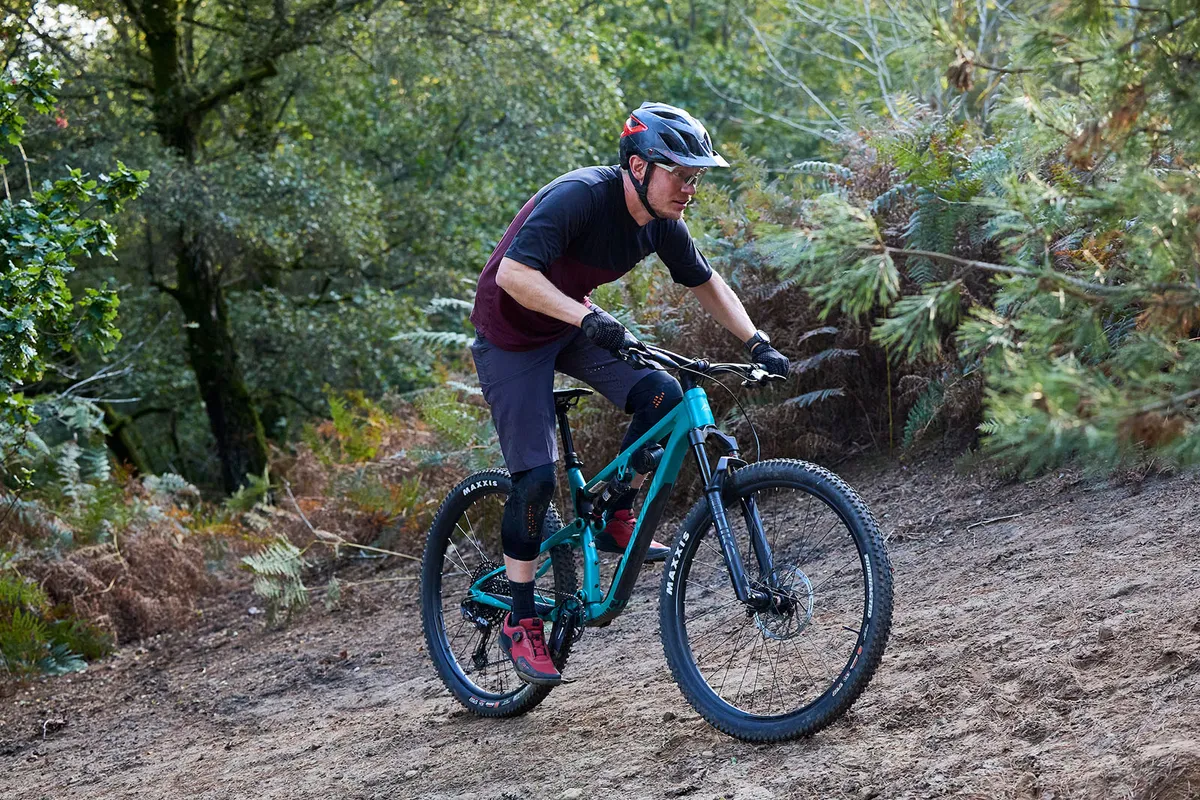
Merida’s geometry certainly makes sense to me, with a comfortable, roomy position on the bike. At 182cm tall, I found the Long to be ideal.
The super-steep seat angle feels great, placing your hips right over the cranks, for an efficient position while pedalling. It works especially well on steeper pitches.
The lengthy front end ensures there’s ample space for your upper half to move forward and back, and not feel cramped.
Under power, the One-Twenty impressed me, with the shock remaining still under all but the most spirited efforts.
This lack of shock movement means the bike isn’t robbing your leg power, which otherwise leads to a lethargic feeling on climbs.
If you do stand up on the pedals, there’s some nominal pedal bob, as you would expect.
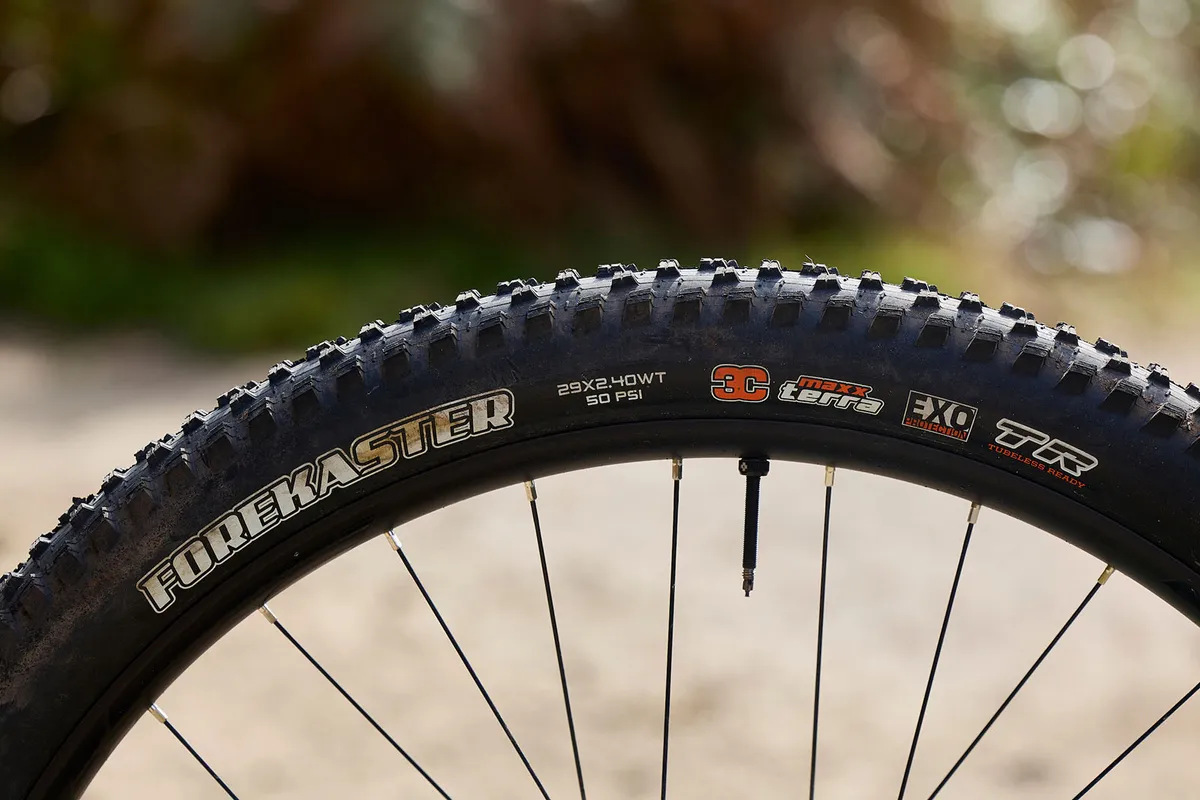
The suspension works well with the Forekaster tyres, which are relatively fast rollers, thanks to a mid-depth, closely packed chevron-style tread pattern.
They zip along on tarmac better than a chunkier set of mountain bike tyres would, and offer more grip than the likes of a Maxxis Rekon on dirt.
On tarmac drags, I reached for the shock’s lockout on occasion, but off-road, I kept the shock open and free to do its job.
Over technical climbs, there’s little to complain about.
The efficient pedalling remains, while traction is good – there’s just enough sensitivity in the suspension to work with the tyre to create grip and smooth the way when you bang it into steps, rocks and roots.
The bike doesn’t wallow into its suspension when you encounter steps. Instead, it rises up and over with minimal complaint, helping you maintain a consistent pedalling stroke.
Merida One-Twenty 700 descending performance
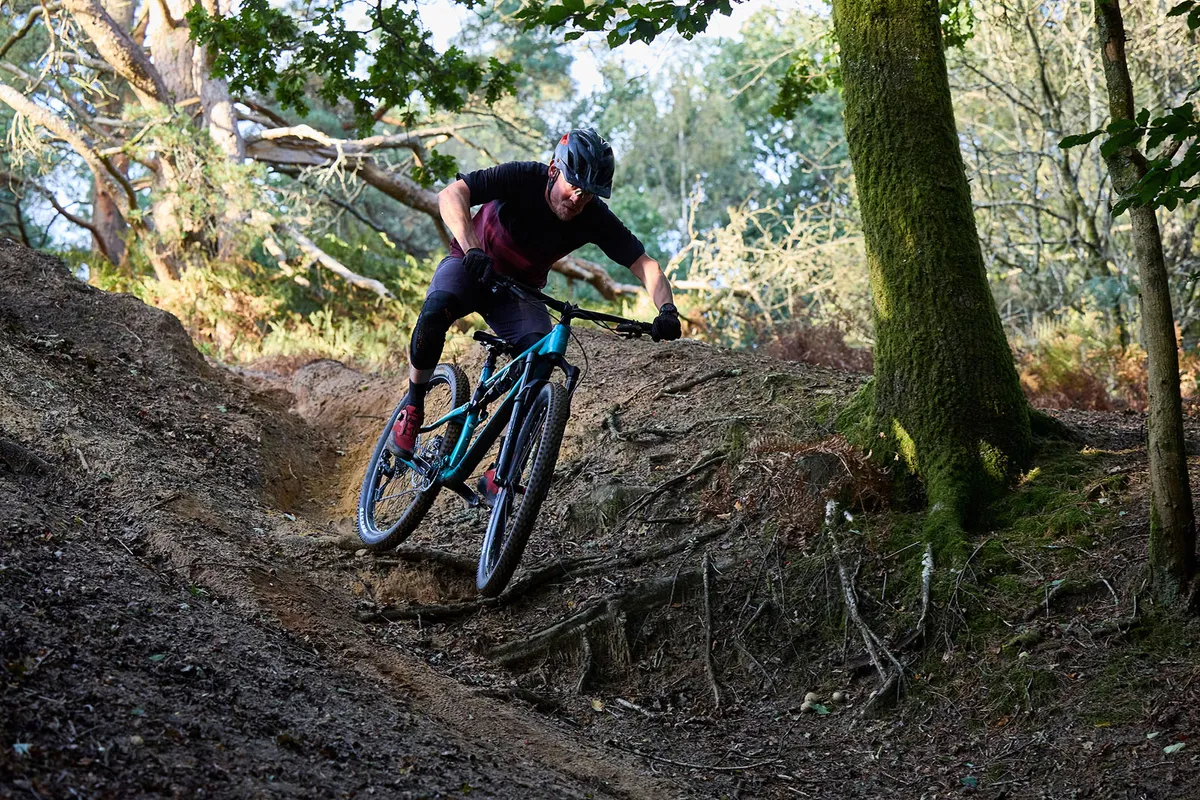
The stable suspension that works so well on the climbs means on traverses and descents it’s not the smoothest bike out there.
The suspension ramps up, firming in its mid-to-late stroke, so there’s definitely feedback through the bike as you roll over trail features.
It’s not jarring or uncomfortable, with the bike effectively taking the edge off impacts. However, if you’re looking for a bike that offers the ultimate insulation from trail features, this isn’t the one for you.
It also means that when you send the bike over bigger drops and jumps, there’s enough progression to prevent the bike bottoming out horribly, and feeling out of its depth.
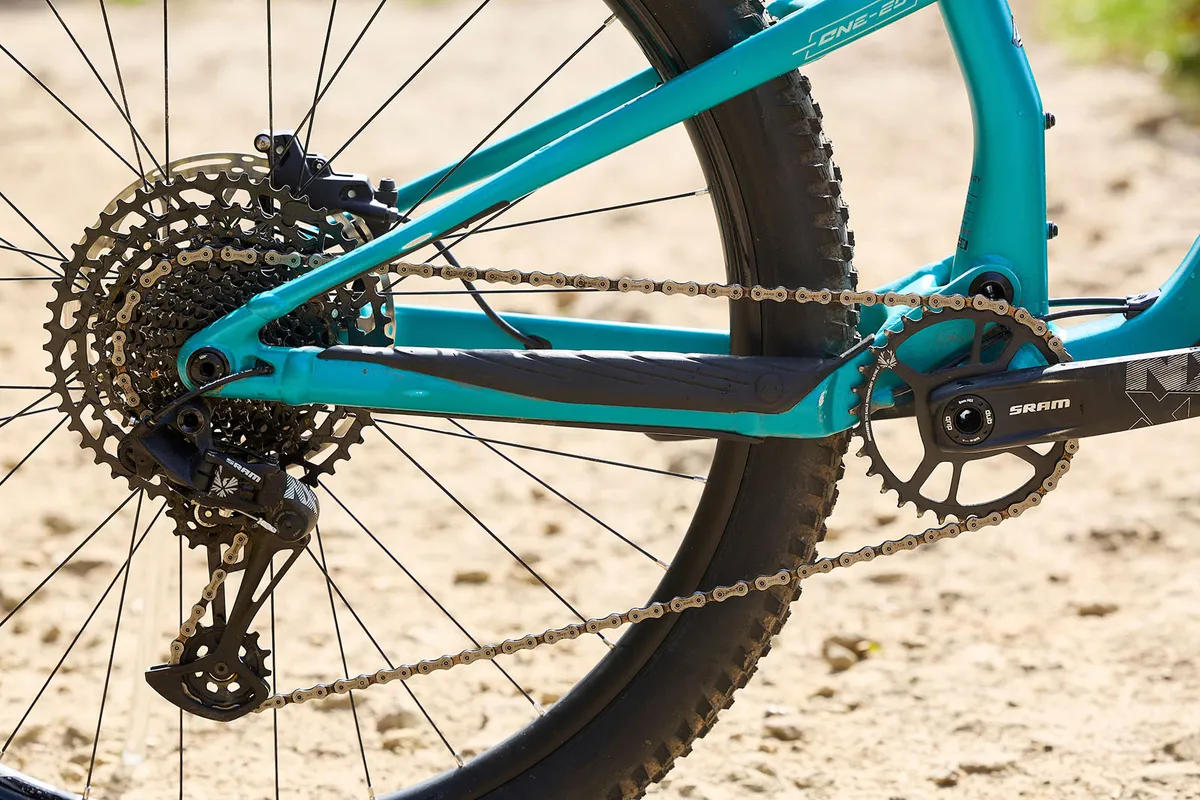
Likewise, there’s tons of mid-stroke to push against, whether that be in a berm or on the lip of a jump. This helps generate and maintain speed on flow trails, on which the Forekasters again show their strength.
When you’re hitting chunkier tracks, you have to remember this is a relatively short-travel bike in the grand scheme of things, as you push the suspension’s rubber sag indicator towards the end of the shock and fork stanchions.
However, it’s certainly a bike where the suspension works with you, rather than becoming the limiting factor on your fun and frolics.
Handling, as you’d expect from a bike with progressive figures, impresses.
The long reach adds tons of stability when you’re operating at higher speeds, and surfing over loose rocks and un-compacted loam. It gives you the confidence to press on and explore your handling skills.
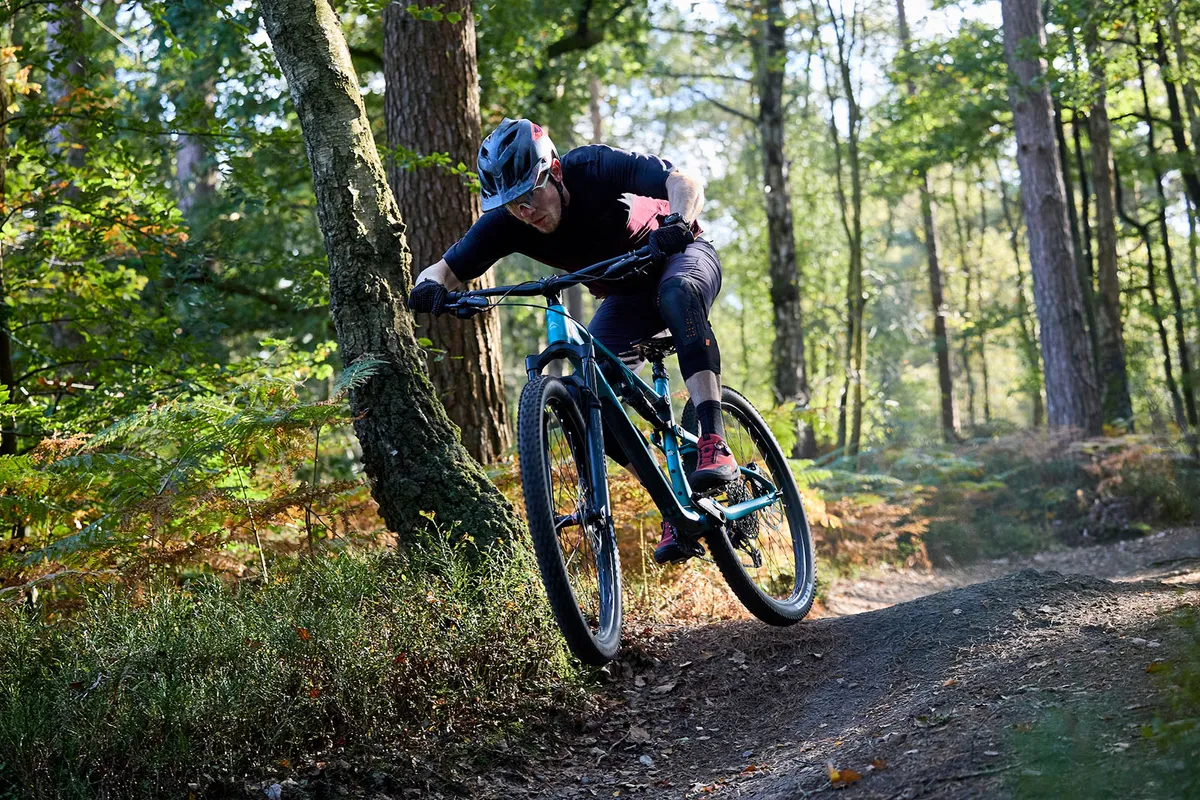
That said, the 66-degree head angle manages to retain a good amount of reactivity.
Through tight and twisty trails, it was rare that I felt the front end go light and understeer. It’s perfectly possible to thread the needle on the One-Twenty through nadgery gaps between rocks, or tight spaces between tree trunks.
The low-slung BB and long reach feel good in high-load corners, but in looser conditions it’s here that the mid-depth tread on the Forekasters can come unstuck.
They’re not as aggressively treaded as your ‘standard’ trail tyre and so care needs to be taken in softer conditions.
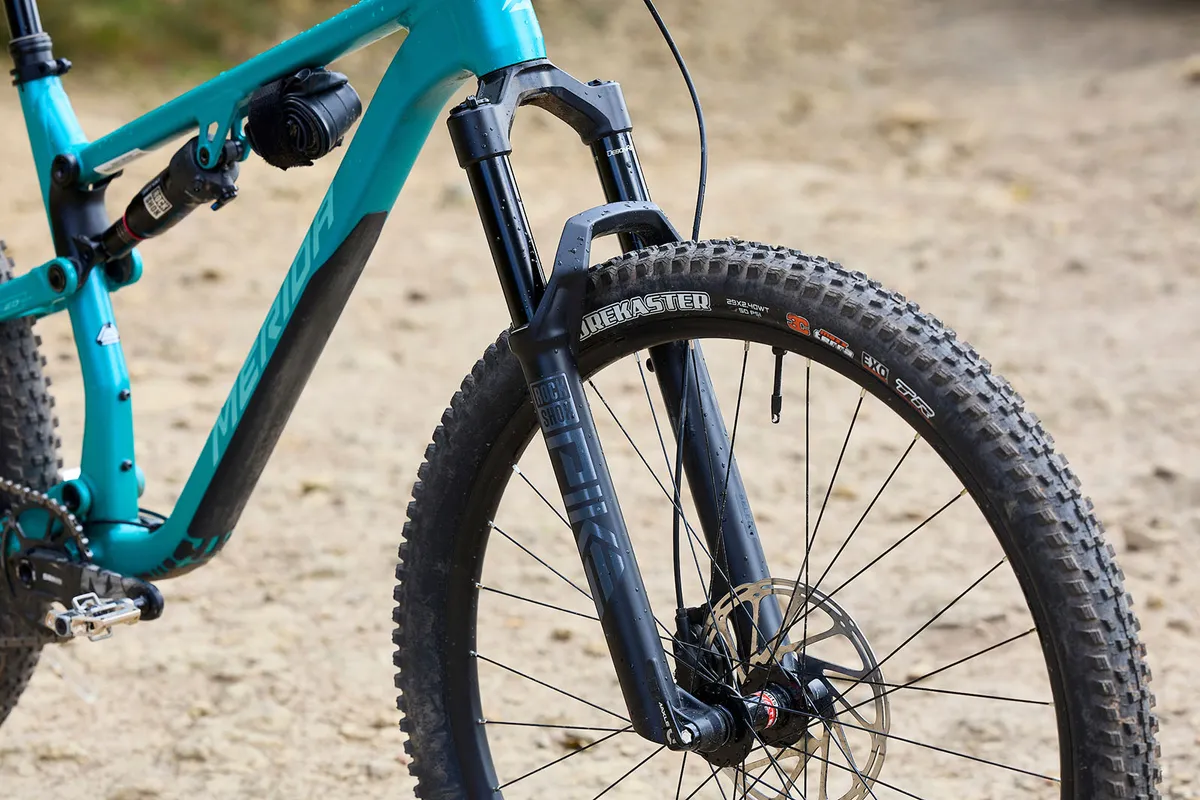
When it comes to kit, I was happy with what was provided, rather than being blown away. The Pike Select fork is good, though maybe not as smooth as a GRIP-damped Fox fork.
I’ve often come away feeling cold about SRAM’s DB8 brakes, too. However, a quick (and cheap) swap to sintered pads immediately seemed to add power and bite.
The Forekasters seem a good all-round tyre for those looking to do plenty of miles, rather than hitting the most aggressive trails.
The 35mm bars and Merida’s firm-feeling grips transmit a fair bit of buzz to your hands – a swap mid-testing to some softer grips improved comfort no end on rattly and rocky trails.
How does the Merida One-Twenty 700 compare to the Merida One-Forty 700?
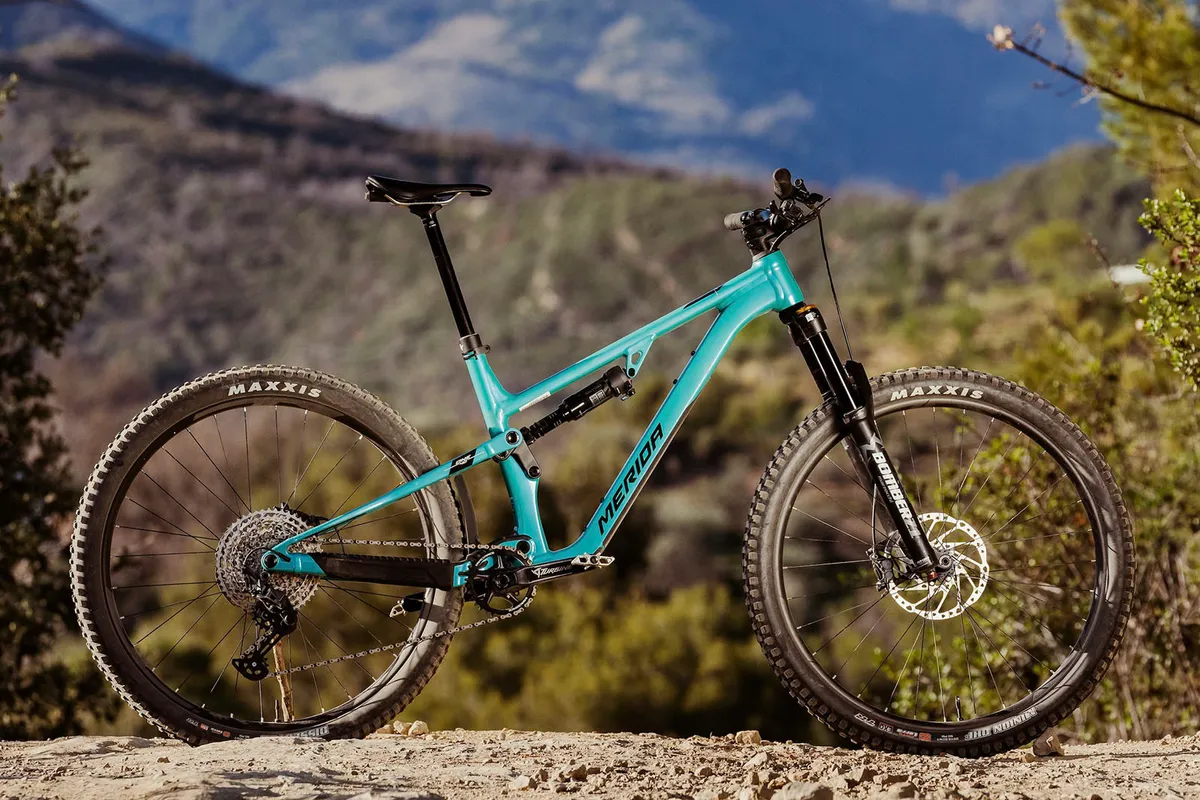
On paper, these are two entirely distinct bikes, especially if you’re looking at the spec lists.
However, with both sitting in the ‘trail’ category, they might both be options you’re looking at when choosing a new bike.
On the trail, with its bigger tyres, stouter fork and longer travel, the One-Forty immediately feels like a burlier, more capable bike. It has more of a presence and feels in reality like a shorter-travel enduro bike.
The One-Twenty, with its faster-rolling rubber, and ever so slightly peppier ride quality, feels like a beefier downcountry bike, or one that’s suited at least to longer rides in the hills.
If I was a rider looking for a bike to truly push my technical limits, I’d pick the One-Forty. The Marzocchi Z1 can be pushed really hard, and the Maxxis Minion/Dissector tyre combo is up to pretty much anything you can roll it over.
However, if I was more interested in covering miles, or ripping round trail centres, I’d opt for the One-Twenty. It feels more efficient, is easier-rolling, and comes in at a kilo lighter.
The One-Forty is slightly better value, too.
Merida One-Twenty 700 bottom line
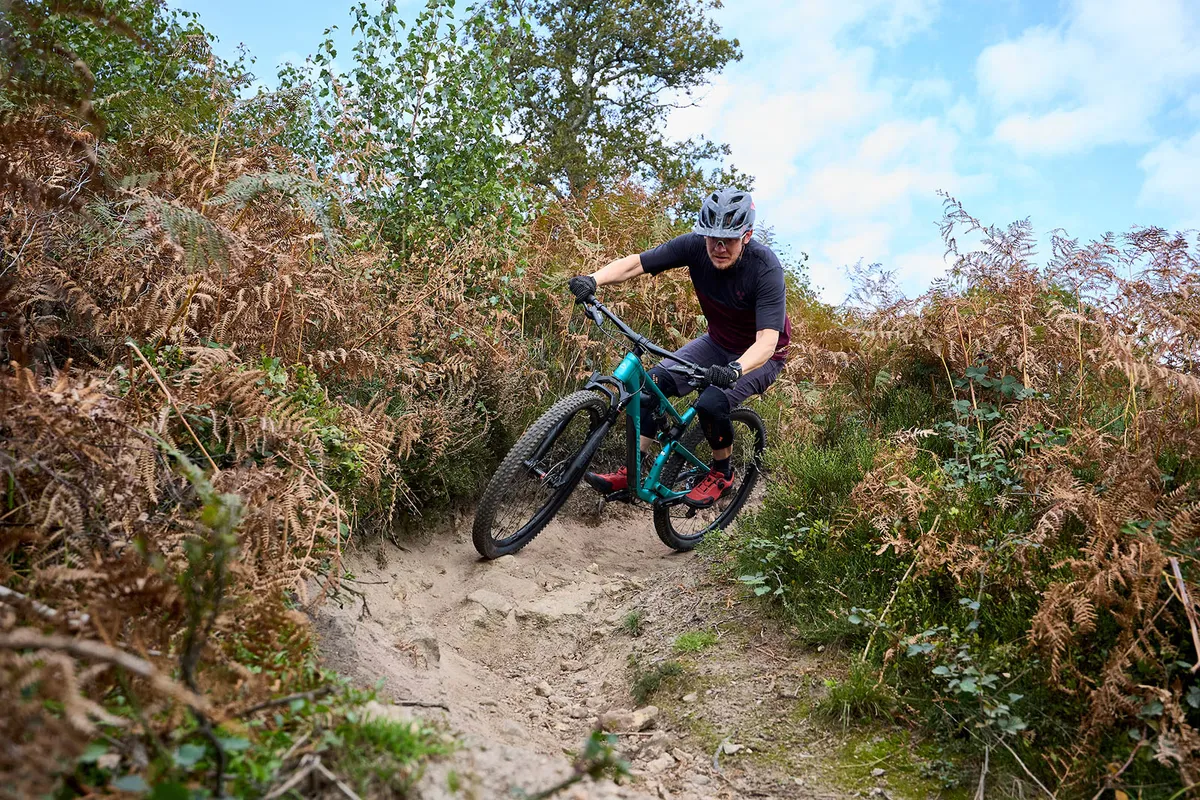
The new Merida One-Twenty marks a significant upgrade from the previous-generation bike, thanks to an impressive suspension platform and almost perfect geometry.
It’s best suited to big days out where efficiency is key. Yet a few choice upgrades could still make it a riot in the woods, with the progressive geometry and suspension paying dividends.
Product
| Brand | Merida |
| Price | £3100.00 |
| Weight | 15.20kg |
Features
| Fork | RockShox Pike Select, 130mm travel |
| Stem | Merida Expert eTR II, 40mm |
| Chain | SRAM SX |
| Frame | Alloy, 130/130mm travel |
| Tyres | Maxxis Forekaster 3C Maxx Terra EXO TR 29x2.4in f, Maxxis Forekaster 3C Maxx Terra EXO TR 29x2.4in r |
| Brakes | SRAM DB8, 200/200mm rotors |
| Cranks | SRAM NX 32t |
| Saddle | Proxim W400 STN |
| Wheels | Merida Expert TR rims on Novatec SL Team hubs |
| Headset | Acros ICR |
| Shifter | SRAM NX |
| Cassette | SRAM PG-1210 |
| Seatpost | Merida Expert TR II |
| Grips/tape | Merida Comp EC |
| Handlebar | Merida Expert TR II, 780mm |
| Rear shock | RockShox Deluxe Select+ |
| Bottom bracket | SRAM DUB |
| Available sizes | XShort, Short, Mid, Long, XLong |
| Rear derailleur | SRAM NX |
